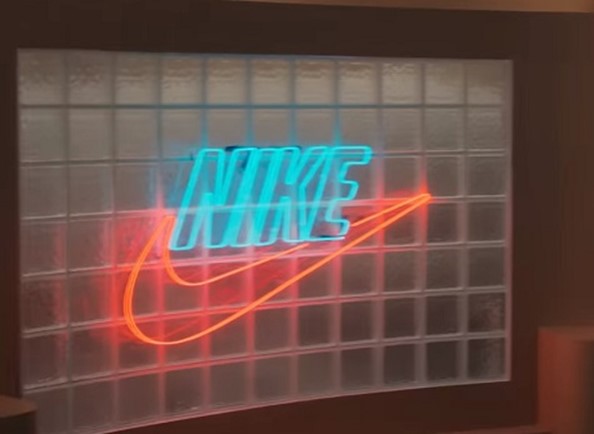The “message picture” is a kind of movie designed to impart a moral lesson through its storytelling. The message and its delivery theoretically work in tandem. But there are plenty of messages aside from moral instruction, such as messages from sponsors, and sometimes the existence of the message itself may be the point.
Let’s be very clear here: The message of Air is dogshit. It is a movie about a fucking shoe, about how that fucking shoe is important. The Double Features have already come for Air, but it’s worth considering again in the year of movies about Cheetos and Blackberrys and the world’s most popular doll. It’s not like product placement is new to movies, of course. I am a big fan of 1939’s Bachelor Mother, which has a recurring bit about how annoying a Donald Duck toy is — part of what makes this amusing now is not just seeing a Disney character disparaged but seeing this in the context of a non-Mouse movie, back when the studio didn’t control every aspect of its presentation. But at least Disney has made art in the past. The commercial flicks of today are worse than exploitative, they are biopics operating under the cliched story beats and the egg-sucking dog approvals required for the licensing that all officially sanctioned films of this ilk require. They are stories of objects of history that feign interest in the subjects that create them, they worship something that has as its greatest achievement the ability to be bought. Not only are Air and these other movies products, they are products about products.
A tenet of advertisement is that number one never mentions number two. To acknowledge your competition is to imply they have a case against your dominance. This is pretty sound reasoning but it also removes an easy hook for any narrative — “Who is this versus?” as the theorist Ronald MacDonald lays out. In lieu of crushing a competitor, the ad must lay out a story with a different conflict. For decades, Nike has done remarkable work in this regard. An ad might focus on an athlete versus themself, pushing their skills to the limit with the help of the brand’s gear. My favorite commercial implies the athlete versus the viewer, via the intermediary of Dennis Hopper — Buffalo Bills legend Bruce Smith wears Nikes and he will own Hopper’s and by extension your ass if you mess with them. What these ads do via clever storytelling and stellar filmmaking is tell their viewer that Nike makes shoes, in the same way that a trailer reminds a viewer that a movie exists and can be watched.

Air merges the commercial, the trailer, with the movie itself. The Air Jordan was a popular shoe, the movie is a bowdlerized and embarrassingly earnest version of how it was created — Matt Damon’s low-level but ambitious NBA talent scout works with other Nike employees and Ben Affleck’s Phil Knight to convince top prospect Michael Jordan to lend his name to their footwear instead of representing Adidas. But while the movie covers the creation of the shoe, it does not remind the viewer of the Air Jordan so much as Nike itself, a company run by a Zen Buddhist billionaire who would like you to focus not on what a fucking contradiction that is but instead on his goofy genius and donations to charity (tax write-offs). Nike, a company that took a risk (not true) on a longshot (not true) and made a difference (true enough, though not out of any benevolence) — this is the message Air wants to convey. It is not enough for the company to be enormously successful as an economic engine, it must also win hearts and minds.
How To Blow Up A Pipeline is also out to win hearts and minds and is not shy about this. Its message derives from Andreas Malm’s nonfiction book of the same name and is extremely clear — destroying the property of the oil industry is a, if not the only, reasonable response to how that industry is destroying the planet. Instead of making this as an argument, Pipeline assumes this conclusion as fact (and is not wrong), lays out its utility as a way to wreak havoc on oil prices and the use of fossil fuels in general, and dramatizes its execution at a West Texas facility and the subsequent fallout. The movie is not an explicit instruction manual and jokes at one point about the book not being one either, in fact the filmmakers worked with a federal source — left anonymous, of course! — to make sure no bombmakers could glean knowledge from the movie. The viewer will not come away from Pipeline with the knowledge of its characters, but will have seen their knowledge in action. They will be reminded that such action exists, and can be replicated — the final images of the film show (more fictional) people inspired by the bombing placing their own explosives on a yacht. The underdog knows exactly who this is versus.

A Nike commercial has to distinguish itself in the world of shoe ads, and this is/was a pretty big world. That may seem like a problem but it actually provides space to stand out. Ecoterrorism has fewer depictions, fewer points of comparison, and it’s hard not to look at Pipeline in the context of Kelly Reichardt’s 2013 movie Night Moves, which follows three people before, during and after they bomb a dam that is wrecking the environment. At one point early on, the bombers of Night Moves are in the audience for a documentary about the dangers and damages of hydroelectric power, the film ends with a demand that “an army of individual citizens must rise up and take a stand.” It’s exactly the kind of meaningless unspecific bullshit you’d expect from a documentary, the bombers are unimpressed and you get the sense Reichardt herself scorns such films. Pipeline is clearly trying to avoid this kind of mushiness of advocacy without action. But its action isn’t up to par.
While Pipeline doesn’t waste any time giving fossil fuel proponents a say, it still gets bogged down in acknowledging competition — in this case, well-meaning calls for less violent resistance. The film follows eight people coming together to carry off the bombing and one character is pretty much only there to offer counterarguments and then be told she’s wrong, her dialogue could be the Concerned Liberal version of a Charlie Brown cartoon’s tromboning adult voice (this would be a severely strummed acoustic guitar). This is not bothersome on an ideological level but on an action one; the movie clearly does not think she has any points worth making but seems to use her concern trolling as load-bearing material, stock resistance because the genre of the movie demands it. And what is this genre? Director Daniel Goldhaber described the movie as “a heist film” — a characterization reviewers and marketers were quick to run with — and elaborated in an interview with Filmmaker Magazine:
Nobody watches a bank robbery movie from the ’40s and says, “These people are trying to get people to go rob banks.” They see that movie and say, “This is a movie that’s talking about structural inequality and getting me to empathize with characters who feel like they have no other option than to rob a bank.” This movie follows eight young people who feel like they have no option but to blow up a pipeline. I don’t think of the movie as propagandistic, because there’s no cause and effect. They don’t blow up a pipeline and solve climate change. The doing of it is the narrative catharsis in the same way that it is in a heist movie. I want this movie to be given the same dramatic permission that genre is given.

People can watch movies for many reasons, I personally watch bank robbery movies because robbing banks in particular and crime in general is awesome to see in a movie. Goldhaber is not wrong about the drama inherent in this mode, he just doesn’t craft it very well. The flashback structure conceals thin characters, in some cases types that aren’t even used right (condescendingly portraying a right-wing Texan as someone who doesn’t know what “eminent domain” is in an especially egregious example). The procedural elements are often slipshod — just how many people does it take to roll a barrel of explosive, two petite women or four struggling conspirators? If it’s too heavy for a group to lift, how do they get it in a van? — and procedure and process is everything in a heist flick. That example isn’t just nitpicking either, it is a key part of the movie’s final twist and makes an already-shaky conceit even less believable. The danger to the heisters is underplayed and the possibility of danger for intruders is biffed entirely — surveyors investigating a downed drone show up far away from where the robot was taken out, keeping them out of the explosive radius. The Filmmaker interview with Goldhaber is very detailed, it discusses the short timeframe of conceiving and shooting the movie, its construction as a collective effort, as well as practicalities of shot selection (with diagrams!), it’s far more fascinating as a kind of heist than the heist in the movie itself.
Perhaps that seat-of-the-pants filming contributed to Pipeline’s subpar heisting. It doesn’t have the tension of Night Moves’ preparation or execution, which is grounded in its wary and slippery characters. And it has nothing like the grim persistence and infernal machinations of Sorcerer, let alone the commitment to action and death in The Battle Of Algiers, and yet these were brought up as comparison points, sometimes by the filmmakers themselves. The terrorism target — what the characters are blowing up and why — provides the juice that the actual action does not, and I think that led to a lot of people overselling that action. The prop is far out of proportion to the agit in this agitprop.

Air, on the other hand, might be called passivprop. It wants the viewer to relax and enjoy, not get riled up at its message. But its construction of this narrative is much stronger than Pipeline’s and it also uses a heist structure after a fashion — what is being taken is Michael Jordan’s presumed endorsement deal with Adidas, Nike becomes a crew of misfits grabbing something valuable from a more powerful institution. Ben Affleck began his directing career with the audacious open question of Gone Baby Gone and has since slipped into the slick bullshit of Argo and The Town, but slick bullshit is its own skillset. Pipeline has randos of various abilities, Air has Affleck himself and Matt Damon and Viola Davis and Chris Tucker and Jason Bateman, who is holding the movie together with his understated line readings. Pipeline has a moody but forgettable score, Air opens with Dire Straits’ “Money For Nothing,” one of the best riffs ever put to tape. Pipeline’s object is Big Oil, a villain that can only be abstracted into the conveyance of the movie’s title; Air‘s object is Michael Fucking Jordan. That presence is abstracted within the movie itself but exists in specific footage that runs through the climax and in the memories of a huge chunk of the movie’s audience. Affleck has these easily recognizable reference points but his players, his atmosphere, his mise-en-scene (the office drudgery and fluorescent lights make a fancy shoe for the playground all the more impressive and desirable) situates them in an underdog story that makes them hit with an urgency Pipeline, with its actual fight against the death of the planet, can’t find.
Air is a contemptible, loathsome film. But a commercial filmmaker knows how to make a commercial. I believe what Pipeline believes about fossil fuels while not believing the movie itself; I don’t believe a word or an image Air gives me but can completely believe in how shamelessly it wants me to respect and honor and maybe even love Nike for making a shoe. Pipeline’s advocacy and structure ultimately don’t align and what results is not a mixed message but a mid movie. It’s writing checks it can’t cash while Air’s message comes through loud and clear.

